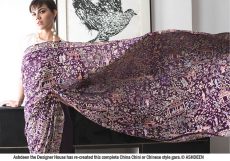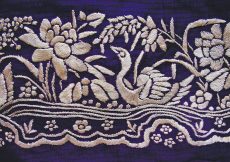. Several elders across Gujarat, recall Chinese men on bicycles who sold garas by the weight. The heavier garas, with more embroidery, were more expensive. Over the years, a close relationship developed with their clients. The Chinese would leave their heavy bundles on a particular veranda during their visits. In the heat of the afternoon, […]
Tag: By Dr. Shernaz Cama
Parsi Embroidery: A Heritage Of Humanity – III
. In the early stage of development, embroidered yardage was covered on all four sides as if bordered within a frame. This yardage is called gala in Gujarati and its enclosed patterned space gave its name to the Gara. Parsi women following Indian tradition began designing kors or borders to match the inner embroidery, then […]
Parsi Embroidery: A Heritage Of Humanity – II
. All Creation is ultimately positive and helpful. It is an optimistic creed which has helped keep a very small, scattered people active across centuries and across several diasporas. This iconography comes to life in traditional Parsi embroidery. Flowers, birds and animals are celebrated as emblems of power, protection and purity. The simurgh and rooster, […]
Parsi Embroidery: A Heritage Of Humanity – I
Complex roots and routes lie behind what we call ‘Parsi Embroidery’ today. The tradition grew from Achaemenian Iran, through the Silk Route into China and then came with Indian and European influences back to its originators, the Parsi Zoroastrians in India. Now a tiny minority of fewer than 55,000 individuals in India, Parsi Zoroastrians have […]



